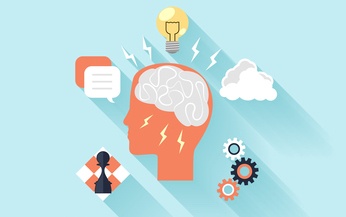A generationally diverse work force is better equipped to respond to today's high-flux and disruption-prone marketplace.
Like-minded teams maintain; diverse teams innovate.
It's nearly impossible to learn something new from someone who shares your views or thinks like you. Why is diversity so challenging for many organizations and leaders? Because it's more comfortable to be with people who think and act similarly. The confrontational aspect of different viewpoints is complicated and harder to manage.
Organizations that hire and promote the same kind of thinkers are capping their potential.
More perspectives on a team lead to better decision-making. Perspective diversity can come in many forms: through different backgrounds, personalities, genders, races and ethnicities, experiences, thinking patterns, locations, skills, leadership styles, and ages.
A diverse workforce is better equipped to respond to today's high-flux and disruption-prone twenty-first-century marketplace.
Research shows that nondiverse teams are likely to apply a more uniform approach to problem-solving, which ultimately dampens creativity and limits the solutions the team will try. A diverse team is better equipped to approach a problem from every angle, resulting in a better, more thought-through solution. Testing ideas against opposing points of view are how the best ideas get developed.
Eighty-five percent of enterprises agree that diversity results in the most innovative ideas. In addition, external organizations, across industries, rated highly for diversity and inclusiveness report 57 percent better team collaboration, 19 percent greater retention, 45 percent more likelihood of improving market share, and 70 percent more likelihood of achieving success in new markets.
A diverse team provides the opportunity for the unique strengths of each team member to be leveraged. The greater the diversity, the greater the breadth of strengths available. Each diverse team member has strengths that can compensate for the shortcomings or blind spots of other team members.
Cognitive diversity is where a team of people has distinctly varied ways of thinking (experimental, analytical, logical, creative, etc.). Cognitive diversity fuels innovation, enhances employee engagement, boosts customer satisfaction (because diverse customers are represented internally), and drives business success in today's rapidly changing workplace.
Diversity of thought spurs innovation.
One of the most valued forms of cognitive diversity in today's changeable world can be found in a multigenerational workplace. Because Millennials fundamentally think and approach problem-solving differently than previous generations, generational diversity is a very powerful version of cognitive diversity.
Generational differences have never been wider than they are today. Most workers--52 percent--say they are least likely to get along with someone from another generation compared to 30 percent with a different racial background and 19 percent with the opposite sex, according to a recent poll by research-and-consulting firm Frank N. Magid Associates. "Generational understanding is the new diversity training," says Sharalyn Orr, its executive director.
Friction across generations is likely to continue into the future: 45 percent of Generation Z (the post-Millennial generation) anticipates potential challenges working with Baby Boomers, 17 percent with Generation X--but only 5 percent with Millennials.
With generations being one of the greatest diversities that divide employees, leaders must act intentionally to unite generations in order to reap the benefits of generational diversity.
Fostering an environment of respect, inclusion, open communication, and freedom to create and implement ideas will help organizations capitalize on their generations' diverse cognitive power. Marrying previous generations' experience with Millennials' fresh perspectives and innovation will help future-proof organizations in the twenty-first century.
For example, a team that benefits from generational diversity will be able to communicate with the confidence of a Baby Boomer, the experience of Generation X, and the velocity of a Millennial.
Dennis Kennedy, founder and CEO of the National Diversity Council, says, "Managing generational diversity is key for organizations to gain a competitive advantage and make a positive impact on employee morale, productivity, and retention." He adds, "Organizations that want to thrive in the future will need to have employees and managers who are skilled in dealing with differences along these and other dimensions, including generational diversity."
Up until now, companies have asked employees to adjust to the corporate culture, but Anka Wittenberg, senior vice-president and chief diversity and inclusion officer at SAP, encourages corporate cultures to "open up to being inclusive" and allow the uniqueness of each generation and the individual to influence the company culture.
Achieving cognitive diversity through a multigenerational team enables workers to ask better questions, be more effective, and deliver improved experiences for employees and customers of all ages.
(This is 1 of the 47 strategies Ryan shares in his new book, The Millennial Manual: The Complete How-To Guide to Manage, Develop, and Engage Millennials at Work.)
Consider Ryan Jenkins to be your next Millennial or Generation Z keynote speaker by clicking here...
![]()
This article was originally posted on Ryan's Inc.com column, Next Generation Insights.






